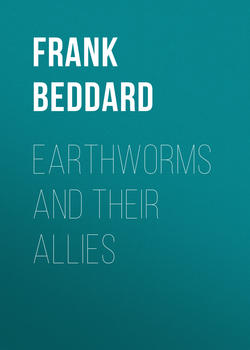Читать книгу Earthworms and Their Allies - Beddard Frank Evers - Страница 2
CHAPTER I
STRUCTURAL AND SYSTEMATIC
ОглавлениеThe group of segmented, bristle-bearing, worms, termed Oligochaeta by zoologists, comprises what are popularly known as earthworms together with certain forms, inhabitants of ponds, lakes and rivers, which are not so well known as to have received a more distinctive name than merely 'worms.' Their next allies are apparently the leeches and – a little more remote – marine bristle-bearing worms termed Polychaeta; the three groups, together with perhaps a certain number of other forms belonging to smaller groups, constitute the Annelida which are a distinct and separate assemblage of invertebrate animals.
The most interesting features about these Oligochaetous worms are their very great anatomical variation and the facts of their distribution over the globe. Their importance as geological agents in levelling the ground was made known a long time ago by Darwin, and that aspect of earthworms has remained in much the same position as Darwin left it. We shall concern ourselves here only with the structure, habits, and range of the earthworms and their immediate allies, the aquatic Oligochaeta. These three aspects of the animals dovetail into each other more thoroughly than is the case with some other groups. This is due to the fact that they have of late years been very thoroughly studied from the anatomical and distributional side. So lately as 1889, M. Vaillant in a very comprehensive treatise was only able to enumerate 369 species, of which a large number were but incompletely differentiated, and some are no longer admitted. There are at the moment of writing perhaps 1500 species, the vast majority of which are well known owing to careful investigation. Furthermore there are but few parts of the world, and these are not of large area, from which earthworms at any rate have not been gathered. Though there can be no doubt that a very considerable number of species await discovery, it would seem that we are in possession of information which is not likely to be seriously affected by future researches.
